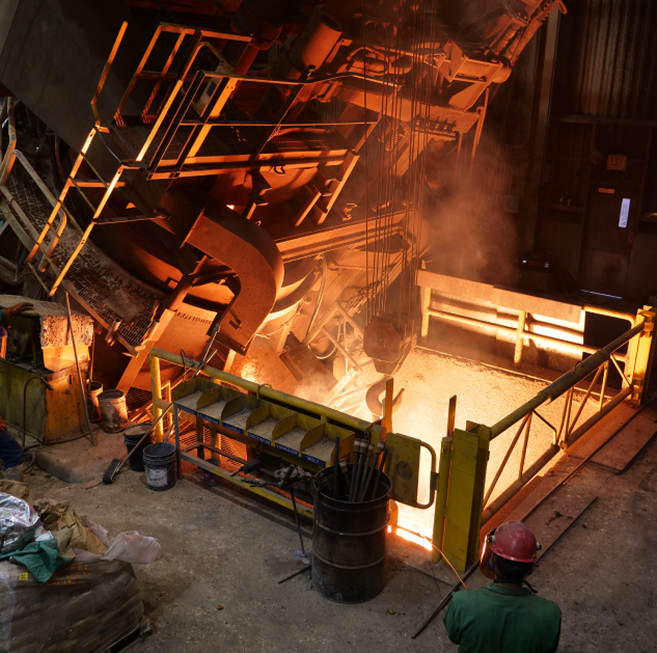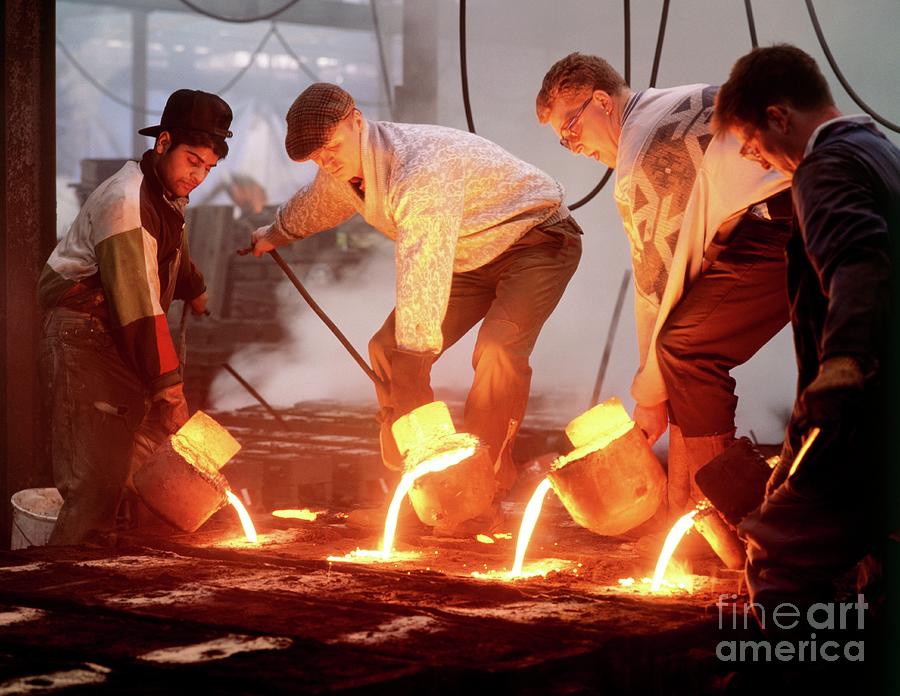Comprehensive handbook to sustainability practices in the Metal Foundry industry
Discover the Ingenious Methods Used in a Metal Foundry for Superior Casting Results
In today's competitive manufacturing landscape, metal foundries are increasingly embracing innovative techniques to enhance casting results - Metal Casting. Advanced computer simulations permit precise modeling of liquified metal behavior, while 3D printing allows fast production of intricate molds. In addition, green materials and automation streamline operations. These growths assure significant renovations in efficiency and top quality control. However, the effect of these technologies on sustainability and production practices stays to be totally explored
Advanced Computer Simulations in Metal Casting
Advanced computer system simulations have actually revolutionized the metal spreading procedure by boosting accuracy and effectiveness. These advanced tools enable engineers to create digital versions of actors parts, allowing them to examine and anticipate the habits of liquified metal during the casting stage. By mimicing numerous parameters such as temperature level, circulation rate, and cooling prices, manufacturers can identify potential issues prior to physical production starts.
This positive strategy decreases waste and decreases expensive errors, eventually resulting in enhanced item quality. Additionally, simulations promote the optimization of mold styles, making certain that they fulfill the details needs of each task. The combination of computational fluid dynamics (CFD) and finite component evaluation (FEA) additional adds to the accuracy of these simulations, supplying insights that were formerly unattainable. Therefore, advanced computer simulations have actually ended up being a vital component of contemporary metal foundries, significantly progressing the industry's abilities.
3D Printing for Mold And Mildews and Patterns
3D printing has actually emerged as a groundbreaking method for developing molds and patterns in the metal foundry industry. This innovation makes it possible for the fast manufacturing of complex geometries that standard manufacturing techniques struggle to accomplish. By utilizing additive manufacturing, foundries can produce elaborate designs with reduced preparations and product waste. The capability to create molds on need enables better versatility in layout iterations, facilitating faster prototyping and adjustments.
3D printing can utilize a variety of materials, including plastics and steels, tailored to particular casting demands. This versatility improves the accuracy of mold and mildews, leading to premium casting end results with boosted surface coatings. Additionally, the reduction in the number of parts called for simplifies setting up processes, even more enhancing production performance. As foundries remain to take on 3D printing, they are poised to redefine industry requirements, paving the way for technology and improved performance in metal spreading procedures.
Eco-Friendly Products and Processes
As the metal foundry sector encounters raising stress to minimize its environmental impact, the fostering of green materials and processes has actually come to be essential. Shops are currently discovering sustainable options to traditional materials, such as utilizing recycled steels and bio-based binders. These materials not just decrease waste however also reduced energy intake throughout production.
Additionally, advancements in sand casting techniques have actually resulted in making use of artificial sands that are less harmful to the setting. Foundries are also implementing ingenious processes like liquified metal therapy that minimizes emissions and improves the quality of actors products.
Water-based coatings have actually changed poisonous solvents, promoting a more secure job environment. By incorporating these environment-friendly methods, metal foundries can considerably decrease their environmental impact while maintaining high-quality casting outcomes. This shift not only profits the atmosphere yet additionally straightens with the growing consumer need for sustainable manufacturing options
Automation and Robotics in Foundry Operations
While the metal foundry market embraces innovation, the combination of automation and robotics is changing procedures significantly. Automated systems enhance procedures such as mold and mildew production, metal pouring, and casting finishing, substantially enhancing performance. Robotics help with the handling of hefty products, reducing the risk of work environment injuries and guaranteeing more secure settings.

Additionally, making use of automated guided lorries (AGVs) enhances material transportation within facilities, making certain timely delivery of parts to suitable workstations. By implementing these innovations, foundries can adapt to rising and fall demands with higher dexterity, ultimately leading to boosted earnings and competitiveness in the marketplace. As automation and robotics remain to evolve, they hold the possible to redefine conventional foundry techniques and drive more advancements in try here casting techniques.
Real-Time Monitoring and Top Quality Control Techniques
The advancements in automation and robotics have led the means for much more sophisticated strategies to quality guarantee in metal foundries. Real-time tracking systems make use of advanced sensing units and information analytics to track essential criteria throughout the spreading process. These systems constantly analyze variables such as temperature, stress, and product structure, making it possible for immediate discovery pop over to this site of deviations from established criteria.
Quality assurance techniques now integrate artificial intelligence algorithms that examine historic information to predict prospective defects before they take place. This positive method reduces waste and enhances general manufacturing effectiveness. Furthermore, incorporated comments loopholes enable fast adjustments, making certain that each spreading satisfies strict quality needs.
The application of digital twins-- virtual replicas of physical properties-- has actually additionally changed quality control, permitting engineers to mimic and optimize processes in real-time. With each other, these ingenious methods considerably improve the integrity and quality of spreadings, setting new sector requirements in metal foundry procedures.
Often Asked Concerns
What Kinds of Metals Are Frequently Cast in Factories?
Typically cast steels in foundries include light weight aluminum, bronze, brass, and iron. Each metal exhibits distinct properties, making them suitable for different applications, such as vehicle components, equipment, and artistic sculptures, enhancing their versatility in production.

How much time Does the Casting Refine Typically Take?
The spreading process commonly takes a number of hours to days, relying on factors such as the intricacy of the mold and mildew, sort of metal utilized, and cooling demands. Each stage affects the general period substantially.
What Precaution Are in Location for Foundry Employees?

Exactly how Are Problems in Castings Identified and Addressed?
Defects in spreadings are why not look here determined via aesthetic inspections and non-destructive testing approaches. As soon as identified, foundry employees address them by fine-tuning processes, changing product structures, and executing corrective measures to assure quality and compliance with standards.
What Is the Cost Array for Metal Casting Solutions?
The cost variety for metal casting solutions usually differs between $1 to $10 per pound, depending upon variables such as product type, intricacy of the design, and production volume, affecting overall rates significantly.
In today's competitive manufacturing landscape, metal foundries are increasingly taking on cutting-edge strategies to improve spreading results. As the metal foundry sector faces raising pressure to decrease its ecological footprint, the fostering of environmentally friendly products and procedures has actually come to be important. Shops are now discovering lasting options to typical products, such as utilizing bio-based binders and recycled metals. By incorporating these green methods, metal foundries can considerably lower their ecological effect while keeping premium spreading results. The innovations in automation and robotics have actually led the way for a lot more innovative methods to high quality assurance in metal foundries.